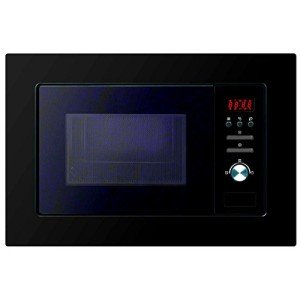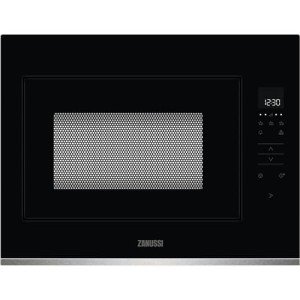Responsible For An Small Built In Microwave Budget? 10 Wonderful Ways …
페이지 정보

본문
 How to Choose a Small white built in microwave oven in microwave oven (articlescad.com)
How to Choose a Small white built in microwave oven in microwave oven (articlescad.com) The idea of putting your microwave in an area in the cabinetry or on the wall will save counter space and provide you with more work surface. Built-in models work seamlessly to create the appearance of a sleek kitchen of all sizes.
The idea of putting your microwave in an area in the cabinetry or on the wall will save counter space and provide you with more work surface. Built-in models work seamlessly to create the appearance of a sleek kitchen of all sizes.This 1.2 cubic foot oven has 10 power settings, and presets for popular foods like popcorn, pizza and frozen vegetables. It also comes with a smart-sensor that determines the cooking time based upon food weight and density.
Power
A small built in microwave oven is a fantastic kitchen appliance that can be used for cooking or reheating meals. Typically, these appliances are powerful and can heat food quickly and evenly. It is essential to select the correct microwave for your needs. The features you should consider include size and design, power level and options for controlling. Some models come with large icons that can assist you in selecting the right settings, while others have smooth controls that are easy to see in various lighting conditions. Other things to consider are the number of racks available and the kind of turntable.
When choosing a micro that is small it is crucial to take into account the machine's internal capacity. The average countertop microwave is able to hold of 1.2 to 2.2 cubic feet. A larger microwave can cook more food at a time, but it may take longer to heat. You should also check the dimensions on the outside to ensure that it fits in the desired space.
There are three kinds of microwaves: convection, conventional, and oven. Conventional microwaves cook food by using electromagnetic radiation. They are perfect for normal uses for cooking leftovers and defrosting food items. Convection microwaves are a great option to bake or roast food items. They usually come with an element for heating and an air-flow fan which circulates hot air around. Finally, an oven microwave combines the functions of a traditional and convection microwave in one unit.
While wattage is an important factor, you should be aware of the power levels of the minimum and maximum levels of your microwave oven. The minimum wattage required for microwave ovens is 800 watts and the maximum is 1,200 watts. Avoid buying a microwave with less than 1,000 Watts since it won't be able to cook your food.
If you're trying to save space in your kitchen, think about installing a built-in microwave in your cabinetry. This will help you help you save counter space and will make your home appear more refined. You can get trim kits that make your microwave appear part of the cabinet. These are more expensive than microwaves that are countertop or over-the-range however they are easier to access and can give your kitchen a luxurious appearance.
Convenience
A small microwave oven built into a countertop is an efficient and simple method of heating drinks and food. It saves space on countertops and allows space for meal preparation. However, it's important to make sure that you choose one that has the best features for your needs. A lot of models come with a turntable, racks and other equipment that make cooking simpler and more efficient. Some models also have an oven that is crisper, which mimics traditional oven baking, bringing crispness to food items.
Microwaves are available in a variety of sizes and styles that can be adapted to any kitchen design. Some models come with a concealed door that blends in with cabinets to create a customized appearance. To select the ideal place for your microwave, you need to consider the frequency you'll use it and who will use it. Also, you'll need to make sure that there is enough space to allow for ventilation according to the manufacturer's instructions.
A popular method of storing microwaves is to place them above the refrigerator. This position keeps the appliance off your countertop and makes it easier to reach. It can be hazardous to children or those with shorter legs, and you will need to take it off and store the microwave each time you use it.
Another option is to put the microwave in a spare cabinet. This is a great option for those with a limited countertop space and offers an unobtrusive, seamless look. It's also a great option for those who don't want to buy an appliance drawer, but require a reliable place to warm food and drinks.
You can also install shelves that pull out to fit a microwave. The shelves are wide enough to fit in any space, and deep enough to stop them from tipping. Some shelves even have an edge that is curved to help keep spills from happening and prevents tipping.
Another option is stacking the microwave over a matching wall-oven in a cabinet that is mid-height. This is a classic installation and works well in Transitional style kitchens. Most manufacturers provide trim kits to ensure that the microwave lines up with the oven's depth. These kits are available in louvered and flat designs and can be installed on top of the millwork or flush mounted.
Design
A built in microwave small-in microwave is a useful kitchen appliance, but it's essential to find a design that blends with the rest of your kitchen design. Placing it on the countertop is a huge footprint that hinders the aesthetics of your kitchen. There are a variety of ways to hide this small appliance, without sacrificing the counter space or storage space.
Installing cabinets, or an appliance garage, to hide the microwave when it is not in use is a possibility. This solution is particularly effective for kitchens with smaller walls where wall space is limited. This kind of cabinet can be customizable to match the door and trim style in your kitchen, giving it an elegant and unique look.
Another way to hide a microwave is to incorporate it into the cabinetry of your pantry. This gives a neat and uncluttered appearance, while also keeping the microwave within reach. This kind of arrangement is perfect for a small kitchen. It can also be combined with other cabinets for pantry storage to maximize storage space.
Some microwaves come with built-in racks or turntables that allow you to cook a variety of dishes at the same time. These features make the appliance more efficient and can save you time. It's important that you only use microwave-safe cookware, utensils and cookware when using these appliances. Avoid metal containers or cookware with metallic accents, as they can spark and damage the microwave.
Microwaves designed to be placed in drawers or cabinets can feature venting systems that are compatible in these enclosed spaces. However, it is essential to consult your contractor to ensure the proper venting is planned. Also, a microwave should never be placed directly in the direction of a window because this could hinder the airflow.
There are several other ways to incorporate a microwave into your kitchen layout, including mounting it under the counter or tucking it away in an island. A microwave with a drawer is a great choice for kitchens that have limited counter space since it is easily accessible by people of all heights.
Another option is to place the microwave above a matching built in combi microwave oven and grill-in wall oven. This type of installation is suitable for Transitional or Traditional Kitchens. Kitchen Designers may employ a trim kit for the final installation to cover any gaps. These kits come in louvered and flat designs and can be used in conjunction to your oven.
Cost
A microwave that is small and built in combi microwave-in is a great option to modernize your kitchen. It adds style and utility. Look for designs and finishes that match the decor of your home. Also look for features like automatic defrost or cooking settings. Timer options are also useful. Some microwaves also have designs that help them resist fingerprints, so you can keep them looking clean.
While microwaves for countertop use are simple to use, they take up valuable counter space that could limit your kitchen's flexibility and design options. If you're concerned about this, consider a recessed model that can be fitted inside your cabinetry to create a sleek, custom appearance. A small microwave built-in oven in a kitchen island can also help to free up space while providing an elegant, seamless appearance. It is important to keep in mind that a recessed micro-wave needs enough air around the sides and rear to function properly.
Consider how often you use your microwave and what type of food you cook most often when deciding where to put it. If you're making a lot of pizza and frozen meals, opt for the highest watt microwave that can cook food quickly and evenly. If you're cooking vegetables or other foods that require a more delicate heating, look into using a smaller wattage model to avoid scorching and overcooking.
Install a mobile, small stand if it's not possible to fit the microwave into a cabinet, or if you prefer a smaller model. These stands come with a base to support the microwave, hold it in a straight position and typically feature a non-smudge surface. They're an inexpensive and convenient alternative that can be used as a temporary microwave solution until you find a permanent place for it in your kitchen.
A small microwave can be added to the corner of your house which will serve as a mini hood for your stove. This is a great way to save space but it's not recommended in homes with elderly or children that need access to their kitchens. Additionally, a corner microwave should not be placed in front of windows since it may block ventilation and can shatter the glass in the situation in the event of an emergency.
